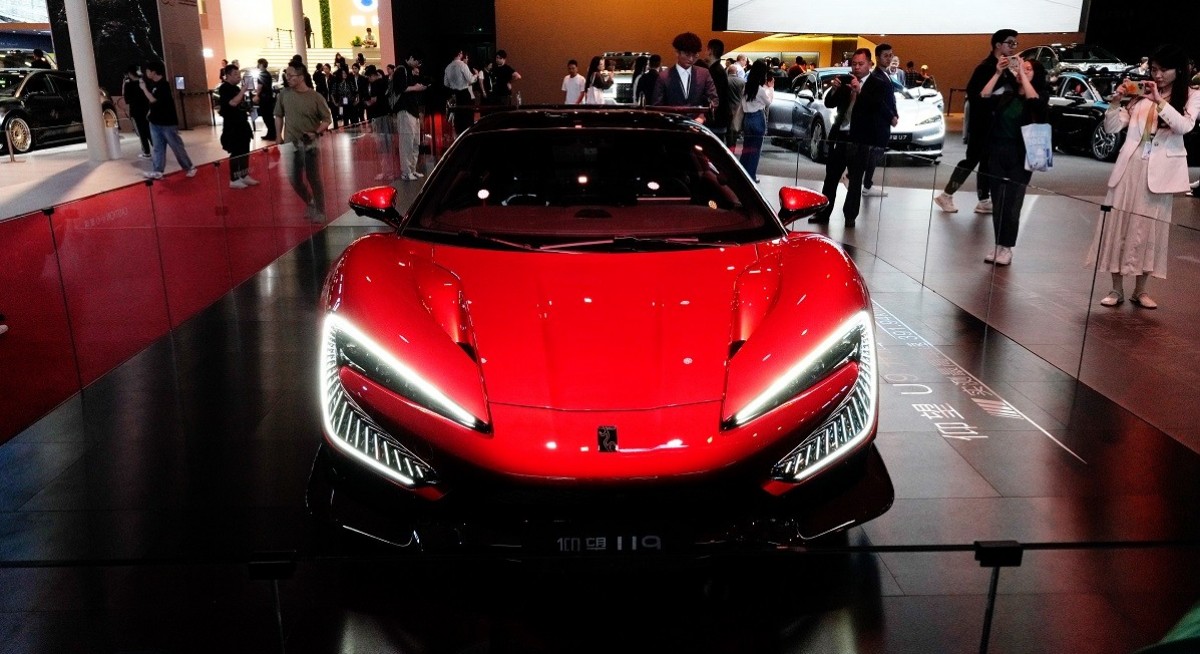Once the go-to symbol of Western quality and engagement, Apple is now a third- or fourth-ranked competitor with Huawei, Xiaomi and Oppo.
Huawei and other Chinese phone manufacturers have simply outcompeted their foreign competitors. Huawei held 18% of the market in the second quarter, pushing Xiaomi to second place with 17%.
And it is not just phones. Coffee, the distinctive classy link to the West captured by Starbucks, is sinking into an also-ran beside the host of new, more sophisticated domestic coffee chains in China. Now it’s the funky coffee, the cool coffee and the sophisticated Italian coffee that appeals to the modern, well-travelled Chinese coffee drinker.
Starbucks is not yet closing stores in China, but many stores are conspicuously empty, while competitor stores like Luckin Coffee are bustling.
See also: Shanghai sets up big commodities trading firm to boost influence
These are not just changes in taste. These have changed in the quality and reliability of Chinese brands. The concept of Chinese branding as establishing a means of consistent quality and legitimacy is challenging competitive assumptions.
The prestigious European cars are feeling the same pressures as the once powerful iPhone. Powerful domestic competitors are emerging. The EU’s complaints that this is state-sponsored competition which gives an unfair advantage are only partially correct in explaining the decline of European auto sales in China.
The real reason is that Chinese vehicles from BYD, Xiaomi, Chery and Great Wall are competing in areas where the Europeans and the US have barely established a technical foothold. The development of electric vehicles (EVs) with advanced technology, including the use of salt batteries, is generations ahead of the development in the West.
See also: The coming China shocks
These technical advances have been combined with sleek designs and innovative technology that moves way beyond simply putting an electric motor replacement into a traditional combustion engine vehicle.
The shift to EVs changes the structure and the mechanics of vehicular transport. China has embraced these changes with, for example, a fully independent articulated four-wheel suspension that provides ride and handling quality far exceeding what is possible with traditional drive chains.
The BYD Yangwang U7 electric super sedan advertisement carries a Wing Chun master on its roof balancing on one leg while driving over speed bumps. This is a statement of precision, power and futuristic technology and perfectly captures the development advances enjoyed by Chinese vehicles.
Businesses can no longer rely on a foreign premium advantage if they are to thrive in the Chinese market.
Technical outlook of the Shanghai market
The minor pullback in the Shanghai Index was an excellent buying opportunity to get a cheaper entry into a well-established, steady uptrend. The rally rebound is moving quickly towards the trend line resistance near 3,675. The index value has returned to clustering along the upper edges of the short-term group of averages in the Guppy Multiple Moving Average (GMMA) indicator, creating a consistent bullish relationship.
For more stories about where money flows, click here for Capital Section
The prolonged steady separation in the short-term group of averages suggests traders continue to have a high level of confidence that the uptrend will continue. The clustering along the upper edge of the short-term GMMA shows that traders believe there are more profits to be made.
The long-term GMMA is completely above the historical resistance level near 3,435. This confirms that the values of the long-term GMMA are now the most significant support feature for any major pullback in the trend.
Trend line C is plotted to include the low of Aug 4. This line provides another way to define the short-term uptrend. Trend line B represents the longer-term uptrend.
There are three target areas for any sustained trend continuation. Now, the first target is near the previous high of 3,675 reached in October 2024. This is a psychological resistance level and may exert little influence on the market because it falls below a major historical resistance level.
The second and higher target is the value of the trend line A. The projected trend line acts as a resistance feature. The current value of the line is near 3,685. A sustained break above this line is very bullish and puts the third upside target within reach.
The third target uses trade band analysis. The Shanghai Index behaviour is defined by well-established trading bands moving between support and resistance levels. The trading band price projection target is slightly higher than the October 2024 high and is placed at 3,700. This is also the value of the three market peaks made in February, September and December 2021.
Daryl Guppy is an international financial technical analysis expert. He has provided weekly Shanghai Index analysis for mainland Chinese media for two decades. Guppy appears regularly on CNBC Asia and is known as “The Chart Man”. He is a former national board member of the Australia China Business Council




